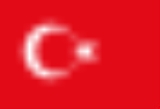
Marmara University Faculty of Economics and Administrative Sciences
Encyclopedia
The Faculty of Economic and Administrative Sciences has 127 year history and provides education in 11 departments and in four languages: Turkish
, English
, German
and French
.
The introduction of an educational system providing both theoretical and practical courses contributed to the credibility of the School in 1915, and resulted in the establishment of the first specialized departments.
In the 1923-1924 academic year, the School was transferred to the Ministry of Economy, and starting with this period, it also became the first institution in Turkey where male and female students received mixed education.
In 1924, the school was renamed the ‘Higher School of Economics and Commerce' and transferred to the Ministry of Education. In addition to the graduates of Commercial High Schools, other high school graduates started to be admitted in 1927.
After the promulgation of the Law of Academies in 1959, the school was renamed the ‘Academy of Economics and Commercial Sciences,' and specialized areas were re-grouped under the branches of ‘Public Finance-Accounting', ‘Economic Business Management' and ‘Foreign Trade and Tourism'. In the meantime, the duration of education was increased from three to four years.
In 1967, evening programs were initiated and some changes in their program were introduced by the Board of Academies. Specialized branches were then re-grouped under two departments: ‘Economics-Public Finance' and ‘Business Administration-Accounting'.
‘The Istanbul Academy of Economics and Commercial Sciences,' which emerged as a fully autonomous legal entity with an extra budget opened three institutes - Accounting, Business Administration Sciences and Turkish Economy Sciences - during the 1972-1974 academic years.
The Academy opened the faculties of ‘Economics,' ‘Business Administration' and ‘Political Science' in the 1977-1978 academic year. In 1982, ‘Galatasaray Business Administration School' was turned into the ‘Faculty of Business Administration', and ‘Aksaray School of Commerce' and ‘Beyazit School of Finance and Accounting' into the ‘Faculty of Commercial Sciences'. The Act No. 41 of July 1982 joined all faculties that emerged as a result of these changes under the ‘Faculty of Economic and Administrative Sciences' of Marmara University, and our institution has become a full-fledged university under the Council of Higher Education of Turkey. (History of faculty)
Turkish language
Turkish is a language spoken as a native language by over 83 million people worldwide, making it the most commonly spoken of the Turkic languages. Its speakers are located predominantly in Turkey and Northern Cyprus with smaller groups in Iraq, Greece, Bulgaria, the Republic of Macedonia, Kosovo,...
, English
English language
English is a West Germanic language that arose in the Anglo-Saxon kingdoms of England and spread into what was to become south-east Scotland under the influence of the Anglian medieval kingdom of Northumbria...
, German
German language
German is a West Germanic language, related to and classified alongside English and Dutch. With an estimated 90 – 98 million native speakers, German is one of the world's major languages and is the most widely-spoken first language in the European Union....
and French
French language
French is a Romance language spoken as a first language in France, the Romandy region in Switzerland, Wallonia and Brussels in Belgium, Monaco, the regions of Quebec and Acadia in Canada, and by various communities elsewhere. Second-language speakers of French are distributed throughout many parts...
.
Departments
- Departments in Turkish
- Departments in Foreign Languages
History
With the purpose of freeing domestic trade from the hegemony of foreigners and providing the much needed knowledge base for the class of national traders, it was the Ottoman Minister of Trade Suphi Pasha who took the first initiative to lay the foundations of the Faculty. His initiative resulted in the opening of the ‘Hamidiye School of Higher Commercial Education' by the Minister of Education Tahir Pasha on 16 January 1883.The introduction of an educational system providing both theoretical and practical courses contributed to the credibility of the School in 1915, and resulted in the establishment of the first specialized departments.
In the 1923-1924 academic year, the School was transferred to the Ministry of Economy, and starting with this period, it also became the first institution in Turkey where male and female students received mixed education.
In 1924, the school was renamed the ‘Higher School of Economics and Commerce' and transferred to the Ministry of Education. In addition to the graduates of Commercial High Schools, other high school graduates started to be admitted in 1927.
After the promulgation of the Law of Academies in 1959, the school was renamed the ‘Academy of Economics and Commercial Sciences,' and specialized areas were re-grouped under the branches of ‘Public Finance-Accounting', ‘Economic Business Management' and ‘Foreign Trade and Tourism'. In the meantime, the duration of education was increased from three to four years.
In 1967, evening programs were initiated and some changes in their program were introduced by the Board of Academies. Specialized branches were then re-grouped under two departments: ‘Economics-Public Finance' and ‘Business Administration-Accounting'.
‘The Istanbul Academy of Economics and Commercial Sciences,' which emerged as a fully autonomous legal entity with an extra budget opened three institutes - Accounting, Business Administration Sciences and Turkish Economy Sciences - during the 1972-1974 academic years.
The Academy opened the faculties of ‘Economics,' ‘Business Administration' and ‘Political Science' in the 1977-1978 academic year. In 1982, ‘Galatasaray Business Administration School' was turned into the ‘Faculty of Business Administration', and ‘Aksaray School of Commerce' and ‘Beyazit School of Finance and Accounting' into the ‘Faculty of Commercial Sciences'. The Act No. 41 of July 1982 joined all faculties that emerged as a result of these changes under the ‘Faculty of Economic and Administrative Sciences' of Marmara University, and our institution has become a full-fledged university under the Council of Higher Education of Turkey. (History of faculty)





